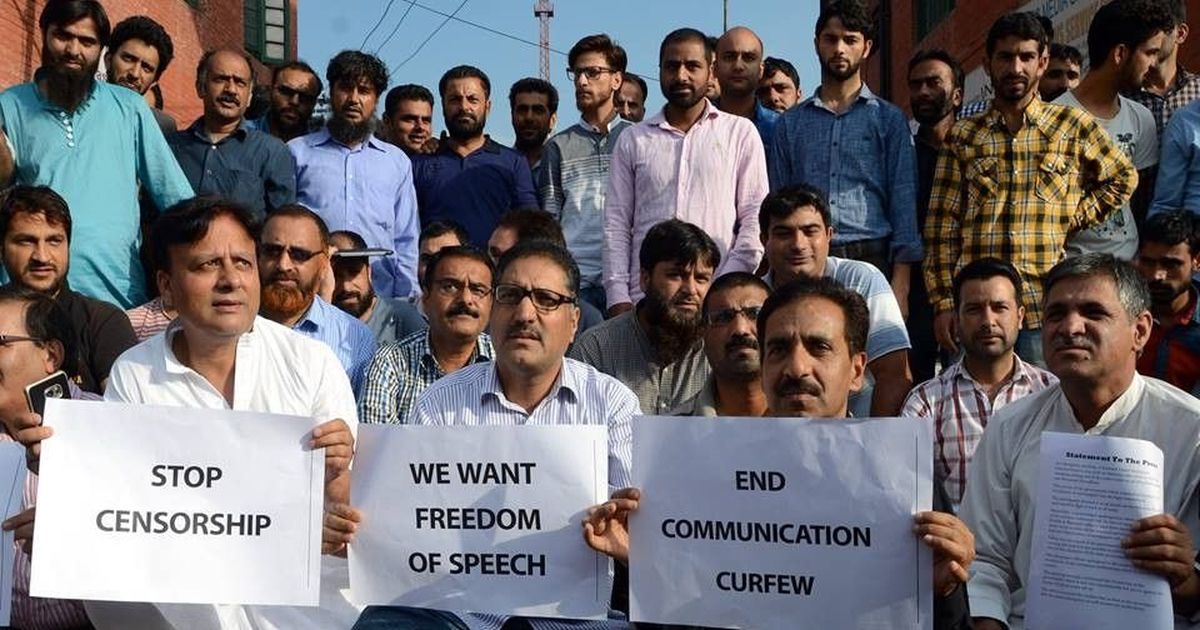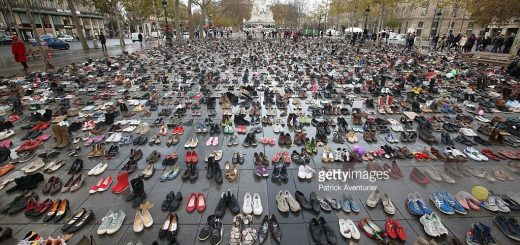Whither Freedom of Press in India?


*Fr. Cedric Prakash SJ
‘World Press Freedom Day’ (3 May) in India is a day of reckoning: a time for stock-taking and for soul-searching; to realise the abysmal depths to which the ‘press’ has fallen in the country and the way several journalists have stooped for petty gains, for political patronage and for their own TRPs. It is a day on which the Indian press needs be challenged on whether it has completely abdicated its role and responsibility as the fourth pillar of democracy or if there is any possibility left for it to redeem itself? Certainly a dilemma – because most will not have the courage to answer it!
In December 1993, the UN General Assembly proclaimed ‘World Press Freedom Day’, following a recommendation of UNESCO's General Conference. Since then, 3 May, the anniversary of the Declaration of Windhoek is celebrated worldwide as World Press Freedom Day.
The day acts as a reminder to governments of the need to respect their commitment to press freedom. It is also a day of reflection among media professionals about issues of press freedom and professional ethics. It is therefore an opportunity:
- to celebrate the fundamental principles of press freedom;
- to assess the state of press freedom throughout the world;
- to defend the media from attacks on their independence;
- to pay tribute to journalists who have lost their lives in the line of duty.
The theme for this year’s World Press Freedom Day is ‘Journalism Without Fear or Favour.’ It calls for awareness on specific issues about the safety of journalists, their independence from political or commercial influence, and gender equality in all aspects of the media.
An apt theme for the press in India, who in recent years can easily be defined as ‘journalism only with fear and favour’. One does not need to be a rocket scientist today to realise that, by and large, the Indian press is corporatised by the big moneybags of the country; is coopted by a fascist regime which brooks no dissent; is communalised to the core, catering to a group that cares two hoots for the Constitution of India and has become highly commercialised in its desperation to garner revenue through advertisements either from the Government or the private sector.
Most (particularly many journalists) seem oblivious to the fact that in India, the right of freedom of speech and expression is a fundamental right in our legal system and guaranteed in our Constitution. The right to free press does not exist independently and is incorporated in the right of freedom of speech and expression; and therefore the right to free press is regarded as a fundamental right.
A few days ago, ‘Reporters without Borders (RSF)’ released their ‘2020 World Press Freedom Index’. Their report shows that the coming decade will be decisive for the future of journalism, with the Covid-19 pandemic highlighting and amplifying the many crises that threaten the right to freely reported, independent, diverse and reliable information
This 2020 edition of the Index, which evaluates the situation for journalists each year in 180 countries and territories, suggests that the next ten years will be pivotal for press freedom because of converging crises affecting the future of journalism: a geopolitical crisis (due to the aggressiveness of authoritarian regimes); a technological crisis (due to a lack of democratic guarantees); a democratic crisis (due to polarisation and repressive policies); a crisis of trust (due to suspicion and even hatred of the media); and an economic crisis (impoverishing quality journalism).
On expected lines, India is place 142 out of the 180 countries evaluated; this is two notches below the 140 position of 2019 and worst ever placement for the country. Analysing the ground reality in India the Report says, “With no murders of journalists in India in 2019, as against six in 2018, the security situation for the country’s media might seem, on the face of it, to have improved. However, there have been constant press freedom violations, including police violence against journalists, ambushes by political activists, and reprisals instigated by criminal groups or corrupt local officials. Ever since the general elections in the spring of 2019, won overwhelmingly by Prime Minister Narendra Modi’s Bharatiya Janata Party, pressure on the media to toe the Hindu nationalist government’s line has increased.
Those who espouse Hindutva, the ideology that gave rise to Hindu nationalism, are trying to purge all manifestations of “anti-national” thought from the national debate. The coordinated hate campaigns waged on social networks against journalists who dare to speak or write about subjects that annoy Hindutva followers are alarming and include calls for the journalists concerned to be murdered. The campaigns are particularly virulent when the targets are women. Criminal prosecutions are meanwhile often used to gag journalists critical of the authorities, with some prosecutors invoking Section 124a of the penal code, under which “sedition” is punishable by life imprisonment.
India’s score in this year’s World Press Freedom Index is heavily affected by the situation in Kashmir where, after rescinding the state’s autonomy, the federal government shut down fixed line and mobile Internet connections completely for several months, making it virtually impossible for journalists to cover what was happening in what has become a vast open prison”. Certainly, no credit to a country that prides itself of being the world’s largest democracy.
It is no easy job being a journalist in India today. If one has to stand up for truth and justice one will have to pay the price. We have seen recently, when honest journalists just reported facts they are simply hauled up by a prejudiced system based on some frivolous FIR. On the other hand those who spew hate and venom, can literally get away with murder, provided they are in the camp of the ruling regime (as we have seen in the case of a garbage journalist not long ago). That fear is evident in several cases; a few days ago, there were allegations, after a response to an RTI that the Centre "waived" Rs 68,607 crore in loans to 50 willful defaulters( most close friends of the Government) identified by the RBI. Whatever, the merits of the case, few of the print media had the guts to take the story on their front-page. Thankfully some of the electronic media did cover the story and there was plenty of it on social media too.
There was also the issue of COVID- 19 and reporting on it especially on the realities of migrants and the daily wage earners. The Centre, filed an affidavit in the Supreme Court, praying that “no media outlet print, publish or telecast anything on coronavirus without first ascertaining facts from the mechanism provided by the government”. Fortunately, the apex court did not fall into the trap of the Government’s desire to gag the media. In an order dated 31 March, the Supreme Court said, “We do not intend to interfere with the free discussion about the pandemic, but direct the media refer to and publish the official version about the developments;” adding, “in particular, we expect the Media (print, electronic or social) to maintain a strong sense of responsibility and ensure that unverified news capable of causing panic is not disseminated.”
In a video message for World Press Freedom Day, UN Secretary General António Guterres underscored the crucial role media has in helping people make informed decisions. “As the pandemic spreads, it has also given rise to a second pandemic of misinformation, from harmful health advice to wild conspiracy theories. The press provides the antidote: verified, scientific, fact-based news and analysis.” Mr. Guterres urged governments to protect journalists and others who work in media, and to uphold press freedom. The UN chief thanked the media “for providing facts and analysis; for holding leaders – in every sector – accountable; and for speaking truth to power”.
The famed American newspaper editor and publisher Joseph Pulitzer once said, “Our Republic and its press will rise or fall together. An able, disinterested, public-spirited press, with trained intelligence to know right and courage to do it, can preserve that public virtue without which popular government is a sham and a mockery.” Words that surely ring a bell on the reality of freedom of the press in India today. Not long ago our own Nobel laureate Amartya Sen said,
“The press should do what it can to minimise the abuse of power (self-scrutiny can help and so can competition), but we should also try to understand with clarity why and how press freedom can enrich human lives, enhance public justice, and even help to promote economic and social development.” The point is whether the press in India will pay attention and act on these words of wisdom.
On another World Press Freedom Day the moot question which the Indian press must ask itself is ‘Whither Freedom of Press in India’? Only then, will it be able to delve on ‘Journalism without Fear or Favour!’ This calls for tremendous courage to stand up for justice and truth!
* Fr Cedric Prakash SJ is a human rights and peace activist/ writer. Contact: cedricprakash@gmail.com
NOTE: The views expressed above are entirely that of Fr Cedric Prakash and do not reflect the official opinion of Church Citizens' Voice.

















Does a Catholic priest have any moral right to speak about others' Human Rights when within the iron curtain of the Sabha no rights seem to exist for its members. For example, when Sr Lucy Kallapura spoke out about the injustice and step motherly treatment of nuns, did her rights were respespted ? Did the Sabha ensure reasonable settlement when she was thrown out. No Indian citizen can mortgage or alienate him/herself of their fundamental rights. This priest should speak about denial of rights to both clergy as well as nuns. Set your house in order first before speaking out against real or imaginary absence of press freedom. I live in Kerala and I can say this much. None of our leading and print media give out any sign of being constrained. Most of the leading news papers and visual medias practice no holds barred reporting against central government.